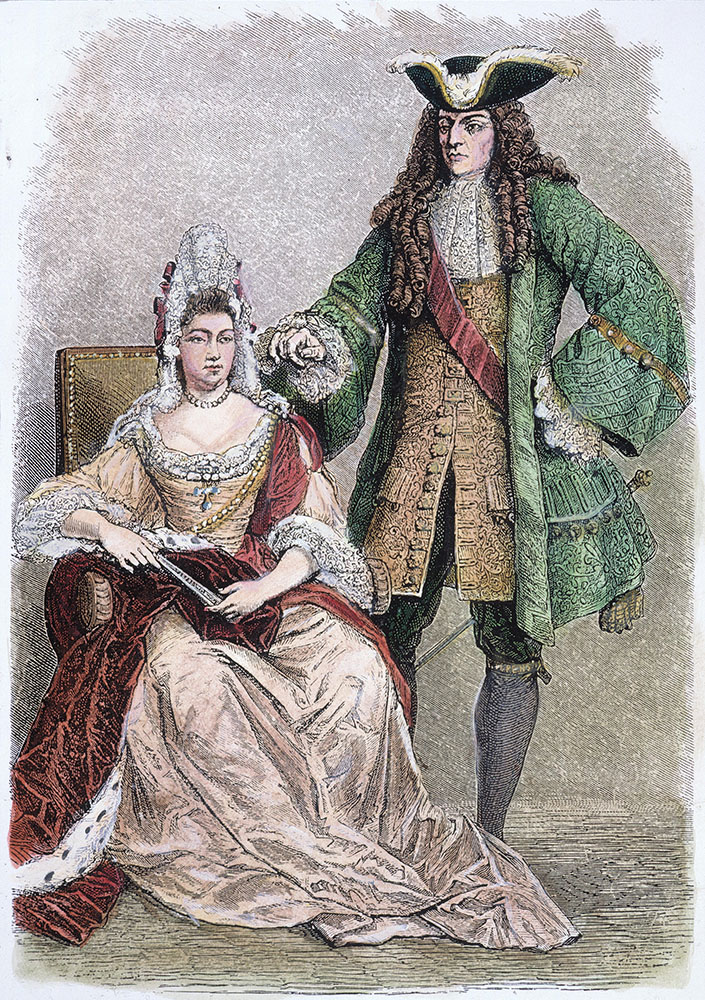Stamp duty: What it is, why we have it and why you might be due a refund
What do wig powder and newspapers have in common? They’ve all been subject to Stamp Duty. Roderick Easdale recounts the history of our least favourite tax.


Much criticism has been directed at our complicated Stamp Duty Land Tax (SDLT) system after HMRC admitted that, since the second-home surcharge was introduced in April 2016, a shocking 15,700 people have overpaid on it.
SDLT, despite the name, is no longer a stamp duty, but a self-assessed tax. This reflects the complicated history of Stamp Duty, a tax that has mutated in ways so strange that it’s been imposed at times on dice, wig powder, hats, gloves, perfume, patent medicine and cheques.
'The aim was to suppress criticism of politicians, as publications that were critical had to pay a duty of a penny per whole newspaper sheet'
Stamp Duty was introduced in the UK in 1694, during William and Mary’s reign, in an Act ‘granting to their Majesties several duties upon vellum, parchment and paper, for four years, towards carrying on the war against France’.
However, once the tax was imposed, it stayed. Indeed, so pleased were the politicians by their new tax-raising powers, Stamp Duty was extended to items beyond the initial terms of the Act. They also saw political advantages from manipulating it. The Stamp Act of 1712 imposed a levy on newspapers and pamphlets – except those that were sponsored by the Government or Members of Parliament.

The aim was to suppress criticism of politicians, as publications that were critical had to pay a duty of a penny per whole newspaper sheet, a half-penny for a half sheet and a shilling for each advertisement the publication contained. One of the results of this unpopular ‘tax on knowledge’ was that some publishers went out of business. Another was that newspaper pages increased in size.
Stamp Duty was extended to house purchases in the 1950s and, as Alan King of Jackson-Stops explains: ‘It was quite simple when it was introduced – you paid nothing at all on a home up to £30,000 and then 1% of the purchase price above that threshold. The average home was only £20,000, so relatively few paid any duty.’
'The annual take from property SDLT rose from £830 million to £6.5 billion in the first 10 years of the New Labour government.'
The simplicity has long since gone. So, too, have the modest tax rates. When Gordon Brown became Chancellor of the Exchequer, he inherited a straightforward system of a flat rate of 1% on purchases of more than £60,000, the price of an average home. In what was to become his trademark with regard to tax reform, he set about making it more complicated and more rewarding for the Treasury.
Exquisite houses, the beauty of Nature, and how to get the most from your life, straight to your inbox.
New bands were introduced and rates were hiked four times in three years. The annual take from property SDLT rose from £830 million to £6.5 billion in the first 10 years of the New Labour government.
George Osborne, another Chancellor who favoured the complicated over the simple, created a 3% surcharge for purchases of defined second homes. The top-rate band is now 12%, or 15% for a second home or buy-to-let property. Philip Hammond then introduced different bandings for most first-time buyers.
It’s the second-home surcharge that’s caused the most confusion and some have been incorrectly paying it. Things that may look like a second home, but normally turn out not to be, include granny flats and annexes if bought at the same time as the principal house and worth no more than a third of the overall price – inherited property doesn’t count either.
'Today, the publishers of Country Life can point out the confusion caused by the Government’s unnecessarily complicated Stamp Duty system without having to pay Stamp Duty'
Replacement main residences purchased before the previous one was sold do require the 3% surcharge being paid, but this can be reclaimed if the previous residence is sold within three years of the new one being purchased.
‘The good news,’ says Mr King, ‘is that those who pay too much SDLT can apply for a full refund. However, with many not realising they’ve paid a surplus, how many are actually receiving these refunds?’
Another bit of good news is that, following the repeal of the 1712 Stamp Act in 1855, the publishers of Country Life can point out the confusion caused by the Government’s unnecessarily complicated Stamp Duty system without having to pay Stamp Duty to the Government to do so.

Credit: Strutt & Parker
A seven-bedroom townhouse that has everything – including the biggest price tag in Kensington
47 Phillimore Gardens has everything – one of the most incredible postcodes in England, 6,520 square feet of space and

The pros and cons of second homes – and how to be a responsible second home owner
Owners of holiday homes can all too easily come into conflict with permanent residents of some of Britain's prettiest spots

6 things to consider before building a swimming pool
A pool makes a glamorous addition to your home, the perfect spot for a summer party or afternoon with family
Country Life is unlike any other magazine: the only glossy weekly on the newsstand and the only magazine that has been guest-edited by His Majesty The King not once, but twice. It is a celebration of modern rural life and all its diverse joys and pleasures — that was first published in Queen Victoria's Diamond Jubilee year. Our eclectic mixture of witty and informative content — from the most up-to-date property news and commentary and a coveted glimpse inside some of the UK's best houses and gardens, to gardening, the arts and interior design, written by experts in their field — still cannot be found in print or online, anywhere else.

